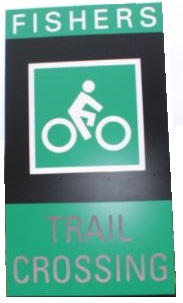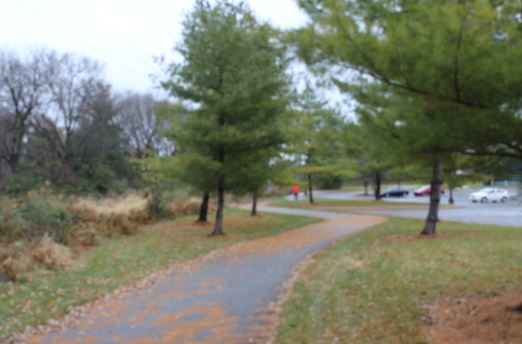 Good Friday, Small Business Saturday, and Cyber Monday are seen by many to be the launch of the Christmas season. For me, the launch of the Christmas season is seen more in an annual event done by Good Samaritan Network in Hamilton county; the Christmas Holiday Assistance Program.
Good Friday, Small Business Saturday, and Cyber Monday are seen by many to be the launch of the Christmas season. For me, the launch of the Christmas season is seen more in an annual event done by Good Samaritan Network in Hamilton county; the Christmas Holiday Assistance Program.
I live in Hamilton County, which based on census data has over 323,747 people with 27.4% or roughly 89,000 of those being kids (people under the age of 18). With a low cost of living, the average home lived in by its owner (not rented) is valued at $230,000. The median household income as of 2016 was $87,782, well over the poverty level.
In such an area, it is not surprising that the level of poverty is low at just 4.8% (based on SAIPE, which is reported to underestimate). With poverty at this low level, most people don’t even notice those that are struggling, even though they might live in the same neighborhood. But to be clear, 4.8% still equates to 15,540 people.
In the City of Fishers, the poverty level is lower than the county level. Per city-data.com, Fishers has a poverty rate of 3.2%. When applied to the roughly 91,000 residents, this equates to almost 3,000 people. Carmel has a similar population with a poverty rate of 4.0%, which equate so roughly 3,600 people. Noblesville has a lower population closer to 60,000 residents, but the poverty rate is at 9.8% or over 5,800 people. These poverty statistics are for all people in each of these cities; however, more kids tend to be in poverty than adults. For example, while the Noblesville poverty level is 9.8%, 11.7% of Noblesville kids are in families below the poverty level. The other big town, Westfield, has a poverty rate of 8.8%, with 9.5% of kids being below the poverty level.

A discussion of poverty numbers might not seem like a way to get into the Christmas spirit; however, it is the best way to get into the real Christmas spirit.
Good Samaritan Network (GoodSam), organizes an annual Christmas Holiday Assistance program that help thousands of families in Hamilton County. They do this with the support of thousands of people throughout the year. It all comes together, however, the beginning of December. This year it comes together next week with the assistance being provided on Saturday, December 9th at the Noblesville Fair Grounds.
The holiday assistance program provides household items, clothing, toys, and food to thousands. The event relies upon donations of items that are both new and “like new”. For many of the families, a “like new” item is greatly appreciated because it is better than what they had. Having helped the past few years, I know that there are never enough new toys to cover every family, and I know that toys for older kids often run out first. I was told this week, that there was still a need for a lot of toys for kids from 6 to 13. When buying toys to donate, the 6 to 13 age is one of the most fun to shop. As such, for those looking to help, donating toys for this age group would be fantastic.
Did I mention this event is huge?
This event is so big that it will take several days to set up. This Saturday, December 2nd, a number of volunteers will sort and organize food boxes that will be given out at the event. Starting next Wednesday (December 6th) from 6:00pm to 9:00pm, the setup for the main “give-away” will start. The setup will continue all day Thursday through Friday evening. It takes hundreds of people to organize the items and get the setup ready to go for Saturday. On Saturday, families that have registered in advance with GoodSam will line up and work through the Noblesville fairground to receive the assistance. Last year, families started lining up Friday night.

To get these families through in a timely manner requires hundreds of volunteers. In fact, an email this week indicated there were over 500 volunteers still needed:
SETUP
Wednesday – 54 open slots
Thursday – 190 open slots
Friday – 18 open slots
EVENT
Saturday – 292 open slots
Volunteers are needed in all areas including assisting families with toy and clothing selection, which is the heart of the distribution. These volunteers help by either working with the items, or by walking through the giveaway area with families to guide them in picking items. There is also the area of helping with food boxes which is as simple as pushing a cart that has items for a family holiday meal as well as other items. There is also always a need as well for helping people get items to their car, helping cleanup, and other tasks.
I’ve worked primarily in the toys and clothing area the last few years on the day of the event (and all of the other areas on other days). Guiding families through the clothing and toy area provides a chance to help them pick out items as well as to chat and hear their stories. While most families are quiet, there are some very touching stories to be heard for those that do share.
I walked through one man who shared about his situation. He came through late in the day, so the choices for toys were very picked over. Even so, he wanted to take less than he was allowed so as to leave things for others. He as appreciative from the beginning to the end. His story was more than I can share in total for both privacy and simply because of how much there is to say. His story is, however, representative of many families in Hamilton County that are struggling now. His wife was the primary income driver for their family, and he primarily was qualified for low wage jobs. His wife ended up with a debilitating illness that put her out of work the past year. It was an unexpected life change that left them in a position where just paying the rent was a struggle. Because he was working jobs that were low wage, simply providing regular meals for the kids had become a struggle. Toys for Christmas were beyond their financial ability, so the holiday assistant program was providing him the chance to make sure his kids would have presents. The bad luck of an unexpected medical condition had spun their stability out of control. His appreciation for what was being provided was clear. The toys he did take were clearly going to help provide his family a Christmas they would otherwise not likely been able to have.
Helping this one person made the event worthwhile to me; however, he was one of thousands that had their own stories.
Of course, this event requires items to give out as well as volunteers to make it happen. If you want to help with the setup or on the day of the event, you can find a sign-up form at:
In addition to helping with the toys/clothing or the food, there is also tear down and cleanup. Not all of the families can make it to the fairground, so GoodSam also delivers some of the food boxes and toys. If you have a vehicle and driver’s license, then can help deliver these items to families. There is plenty to.
If you don’t have time to volunteer, then it’s not too late to donate. Good toys are always needed. In fact, this is one of the few events that will take “like new” toys. If you are planning to load your kids with new toys this Christmas, then now is a great time to take the toys they are not playing with that are like new and donate them. For kids with very little, a ‘like new’ toy will be “new” to them. Granted, new toys are important too! Toys can be dropped off at Good Samaritan’s office near 131st Street and 37, or (better) they can be dropped off at the Noblesville Fair Ground next week during the setup times.
As one of the people at Good Samaritan said this week, “Christmas is caring… Christmas is sharing.” This event is a way to share and care, which is great way to get into the Christmas spirit. For me, it is the realy start of the Christmas holiday. The Good Samaritan Assistant Program is a great way to help your neighbors here in Hamilton County; neighbors that have a huge need you might not have noticed.

# # #
 The Fishers City Council approved an increase to property taxes to pay for the first phase of the new Nickel Plate Trail that has been proposed to replace the Nickel Plate rail. This tax increase is to help fund the $7 to $9 million cost for the first of three phases of the trail.
The Fishers City Council approved an increase to property taxes to pay for the first phase of the new Nickel Plate Trail that has been proposed to replace the Nickel Plate rail. This tax increase is to help fund the $7 to $9 million cost for the first of three phases of the trail.








 For those of you that live in Hamilton or Marion Counties in Indiana, you might be interested in the activity that is happening regarding the White River. There is a lot of noise about the Nickel Plate Trail project in Hamilton County, but the real story might be around the White River for those truly interested in getting outdoors.
For those of you that live in Hamilton or Marion Counties in Indiana, you might be interested in the activity that is happening regarding the White River. There is a lot of noise about the Nickel Plate Trail project in Hamilton County, but the real story might be around the White River for those truly interested in getting outdoors.


 When it comes to security, Hamilton Southeastern Schools have done a lot since 2012. This includes adding secured vestibules, securing the school perimeters, the use of fobs, and more.
When it comes to security, Hamilton Southeastern Schools have done a lot since 2012. This includes adding secured vestibules, securing the school perimeters, the use of fobs, and more.